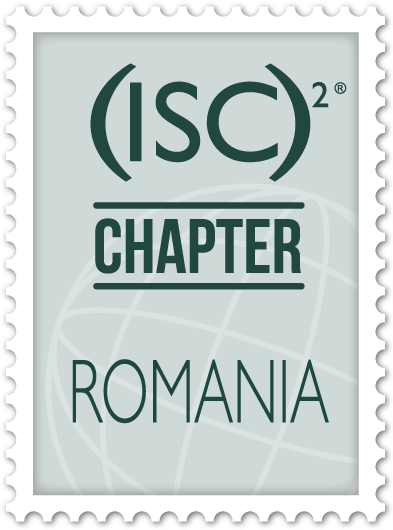Andrei Costin
Co-founder Firmware.RE (RO/FR)
BIOGRAPHY
Andrei is a Computer Science graduate of the Politehnica University of Bucharest where he did his thesis work in Biometrics and Image Processing. While starting out his IT-career in the Computer Games industry, he has worked in the Telecom field and also was a senior developer at a specialized firm programming various GSM/UMTS/GPS sub-systems.
He is the author of the MiFare Classic Universal toolKit (MFCUK), the first publicly available (FOSS) card-only key cracking tool for the MiFare Classic RFID card family and is known as the “printer guy” for his “Hacking MFPs” and “Hacking PostScript” series of hacks & talks at various international conferences. Lately, he was spotted security-harassing airplanes with ADS-B hacks (though no planes were harmed during the experiments) and remotely hacking fireworks/demolition/pyrotechnic systems (though no fireworks show were spoiled and no buildings were demolished). He is passionate about security in a holistic fashion. Currently Andrei is a PhD candidate with EURECOM in the field of “Software security in embedded systems”.
At present, Andrei is mostly busy developing cutting edge security research for embedded systems as part of his Firmware.RE project.
https://www.linkedin.com/in/costinandrei
http://twitter.com/costinandrei
(In)Security of Embedded Devices’ Firmware – Fast and Furious at Large Scale
Embedded systems are omnipresent in our everyday life and are becoming increasingly present in many computing and networked environments. For example, they are at the core of various Common-Off-The-Shelf (COTS) devices such as printers, video surveillance systems, home routers and virtually anything we informally call electronics. The emerging phenomenon of the Internet-of-Things (IoT) will make them even more widespread and interconnected. Cisco famously predicted that there will be 50 billion connected embedded devices by 2020.
Given those estimations, the heterogeneity of technology and application fields, and the current threat landscape, the security of all those devices becomes of paramount importance. In addition to this, manual security analysis does not scale. Therefore, novel, scalable and automated approaches are needed.
In this talk, we present several methods that make *the large scale security analyses of embedded devices* a feasible task. We implemented those techniques in a scalable framework that we tested on real world data.
First, we collected a large number of firmware images from Internet repositories and then performed simple static analysis.
Second, since embedded devices often expose web interfaces for remote administration, therefore we developed techniques for large scale static and dynamic analysis of such interfaces.
Finally, identifying and classifying the firmware files, as well as fingerprinting and identifying embedded devices is difficult, especially at large scale.
Using these techniques, we were able to discover a large number of new vulnerabilities in dozens of firmware packages, affecting a great variety of vendors and device classes. We were also able to achieve high accuracy in fingerprinting and classification of both firmware images and live devices.
Hacking and Securing Network Monitoring Systems: End-to-end walkthrough example on Ganglia (Workshop)
Monitoring of the high-performance computing systems and their components, such as clusters, grids and federations of clusters, is performed using monitoring systems for servers and networks, or Network Monitoring Systems (NMS). These monitoring tools assist system
administrators in assessing and improving the health of their infrastructure.
On the one hand, a successful attack on the infrastructure monitoring tools grants the attacker elevated power over the monitoring tasks, and eventually over some management functionality of the interface or hosts running those interfaces. Additionally, detailed and accurate
fingerprinting and reconnaissance of a target infrastructure is possible when such interfaces are publicly exposed. A successful reconnaissance allows an attacker to craft a highly efficient second-stage attack, for example targeted, mimicry and blended attacks.
In this workshop we aim at teaching practical skills for hacking and securing Network Monitoring Systems (NMS).
We will provide a VM machine and exercises that will enable an end-to-end walk through example on Ganglia monitoring system.
The exercises include a range of activities such as setup, reconnaissance, static and dynamic analysis, vulnerability analysis, proof of concept exploit development, and countermeasures/securing steps.
The attendees will learn step-by-step how to quickly create a PoC exploit for a CVE that is described as having “unspecified vectors”.
Are you the next cyber security superstar?
If you are passionate about an information security topic or you have strong technical skills developing researches on your own, you should definitely Apply at Call for Papers. By submitting you will have the chance to showcase your work to +2000 attendees.
Other speakers joining this year
Ready for this year's presentations?
By registering you will unlock access to 60+ speakers and two full days with cyber security news & showcases from worldwide leaders.
COMPETITIONS
Sponsors & Partners
They help us make this conference possible.
POWERED BY
Orange Romania is part of the Orange Group, one of the largest global telecommunications operators that connects hundreds of millions of customers worldwide. With over 11 million local customers and an annual turnover exceeding 1.5 billion euros, Orange Romania connects 1 in 2 Romanians and offers an extensive range of communication solutions for both individual and corporate customers, from basic connectivity services to complete mobile, fixed internet, TV packages, and complex IT&C solutions through Orange Business.
Orange Romania is the number 1 operator in terms of network performance, and also holds nine consecutive Top Employer certifications, which confirm that Orange Romania, in addition to the remarkable products and services it offers, pays special attention to its employees and working environment. In the past 3 years Orange has launched two 5G Labs in Bucharest and Iasi, that aim to support researchers, startups and companies to test their 5G solutions in advance.
In addition, Orange is a long-term supporter of the startup ecosystem through the Orange Fab accelerator program designed to support entrepreneurs in the development of innovative products and their distribution locally and internationally.

































